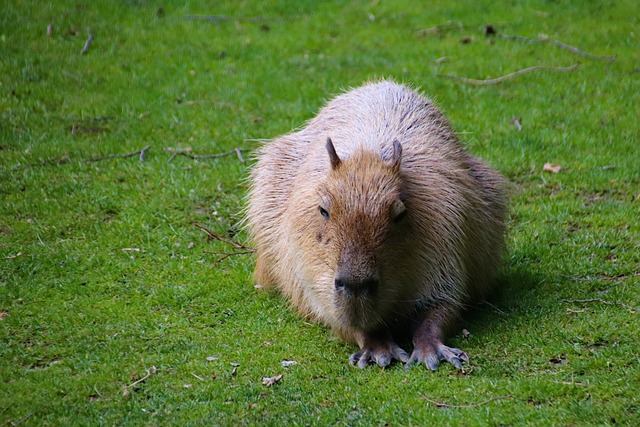Capybaras are the world’s largest rodents, native to South America. They thrive in semi-aquatic environments, often found along riverbanks, in marshes, and estuaries.
Due to their specific habitat needs and social behaviors, they are not indigenous to Europe.
However, capybaras have been introduced to various regions outside their native range, including parts of North America and Asia, mainly within wildlife reserves and zoological gardens.
In Europe, capybaras are not found in the wild as a natural population.
They can be encountered in zoos, private collections, and sometimes in petting farms, where they are kept under controlled conditions for educational and conservation purposes.
Efforts to maintain capybaras in Europe focus on providing adequate space, water resources, and care, reflecting their natural lifestyle as closely as possible.
The presence of capybaras in Europe raises questions about the potential for invasive species to disrupt local ecosystems if they escape and establish themselves outside managed environments.
It is important to consider the ramifications of introducing non-native species, even under controlled circumstances, while also appreciating the opportunity to learn about unique animals like capybaras.
Capybaras in Europe
Capybaras are not native to Europe; they originate from South America. However, they can be found in various settings on the continent, including zoos, wildlife reserves, and, occasionally, private ownership.
Native Habitats
Capybaras are native to South America, specifically to regions that include savannas, dense forests, and areas surrounding bodies of water such as lakes, rivers, and swamps. They are not indigenous to Europe and do not have any natural habitats within European countries.
Capybaras in Zoos and Reserves
In Europe, capybaras are commonly found in zoos and wildlife reserves,, which are kept for educational and conservation purposes. These facilities aim to provide environments that mimic the capybara’s natural habitat. Examples of European zoos with capybaras include:
- Tiergarten Schönbrunn (Vienna, Austria)
- Zoologischer Garten Berlin (Berlin, Germany)
- London Zoo (London, UK)
Capybaras in European Zoos
| Zoo Name | Location | Capybara Exhibit |
|---|---|---|
| Tiergarten Schönbrunn | Vienna, Austria | Yes |
| Zoologischer Garten Berlin | Berlin, Germany | Yes |
| London Zoo | London, UK | Yes |
Private Ownership and Legislation
Private ownership of capybaras in Europe varies by country and is often subject to stringent legislation, including permits and welfare requirements. Laws are generally put in place to ensure the safety and well-being of these animals outside their native territories.
Countries may have differing restrictions or bans on owning exotic pets like capybaras, based on potential environmental impact and ethical considerations.
Impact and Ecology
The presence of capybaras in Europe, being non-native, raises concerns for local habitats and species, and demands attention for the ways they interact with the existing ecosystems.
Environmental Concerns
Capybaras, native to South America, may become invasive in European habitats. They are known to consume vast amounts of vegetation which could lead to:
- Reduction of native plant species
- Competition with local herbivores
These impacts are yet to be fully understood within European contexts, as the established populations and their effects are still being monitored.
European Ecosystems Interaction
European ecosystems are complex and characterized by a balance between various species. Should capybaras become established, their interactions may result in:
- Altered waterway ecosystems due to their semi-aquatic nature
- Potential for spreading diseases to local fauna
It’s crucial to study these interactions in detail to predict and mitigate any adverse effects on the European ecosystems.




